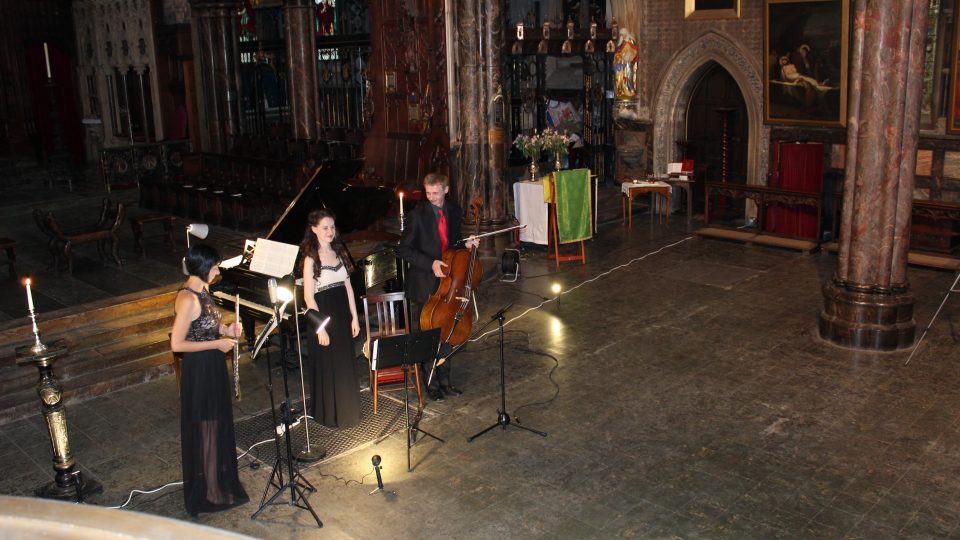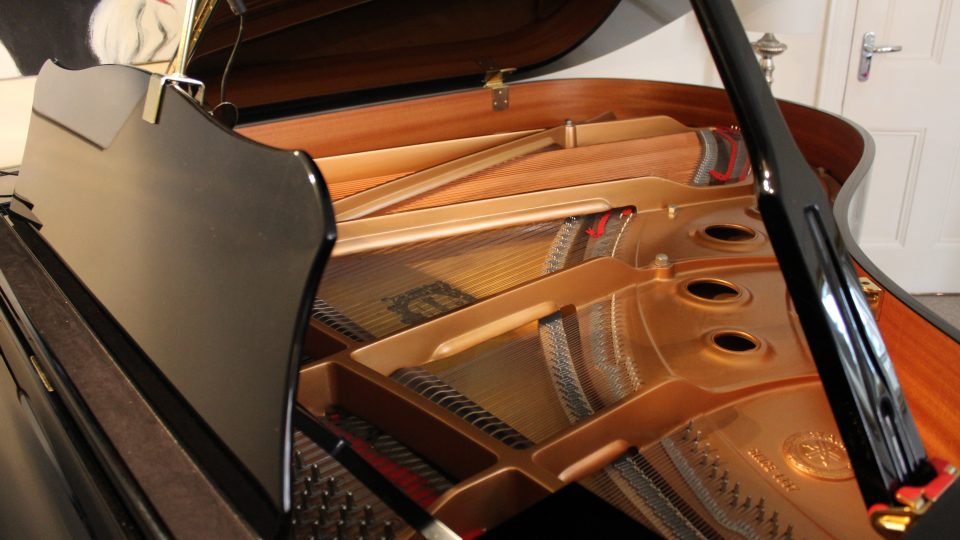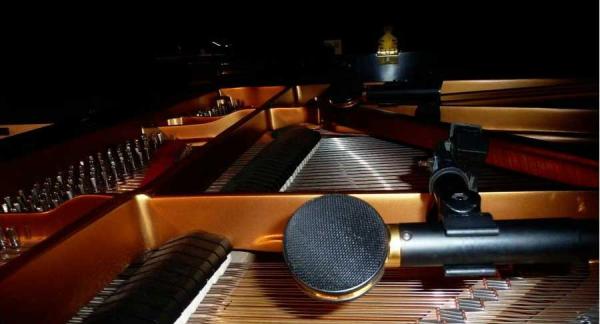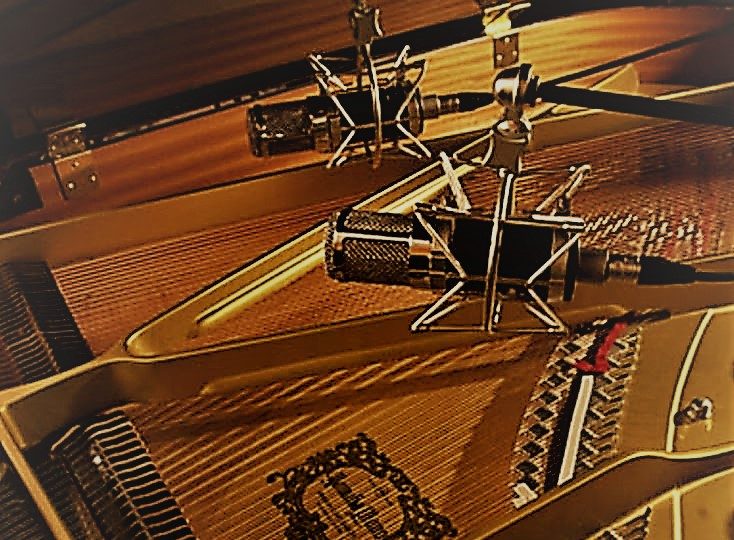-
Oblivion, Piazzolla – Trio espressivo
Oblivion, Piazzolla – Trio espressivo
Oblivion, Piazzolla – Trio espressivo
Working with the trio espressivo was just an alluring experience. They perform superlatively well, but that is not surprising. This trio is made up of three astonishing musicians from the Eastern Bloc.
Making this recording was a challenge mainly because it was done within a very “wet” environment. In order to overcome the building’s acoustics issues, we used two couple of close up microphones combined with a global stereo take. In this way, we tried and put the situation on our side.
We then subjected the takes to some editing. We used the global take our “real” reverb. We worked on the levels, we compressed, we panned, we worked on the general envelope and Voila! The recording issues were resolved.
Enjoy the live recording of WKMT Classical Concert of 24.06.2017.
-
Oblivion, Piazzolla – Trio espressivo
Oblivion, Piazzolla – Trio espressivo
Oblivion, Piazzolla – Trio espressivo
Working with the trio espressivo was just an alluring experience. They perform superlatively well, but that is not surprising. This trio is made up of three astonishing musicians from the Eastern Bloc.
Making this recording was a challenge mainly because it was done within a very “wet” environment. In order to overcome the building’s acoustics issues, we used two couple of close up microphones combined with a global stereo take. In this way, we tried and put the situation on our side.
We then subjected the takes to some editing. We used the global take our “real” reverb. We worked on the levels, we compressed, we panned, we worked on the general envelope and Voila! The recording issues were resolved.
Enjoy the live recording of WKMT Classical Concert of 24.06.2017.
-
Setting up a piano recording studio
Seting up a piano recording studio by Thomas Rickerby
Setting up a piano recording studio
As the resident audio engineer at The London Piano Recording Studio WKMT, I am responsible for the recording, mixing and mastering of the Piano recording sessions that take place at our studio. In this series of articles, I will share with you our recording process, and impart some general guidelines for recording piano from both a technical and creative viewpoint.
In part 1 of this series, I will explore the necessary preparations required for a successful piano recording, from both the pianist and the engineer.
Starting at an obvious point; the piano itself should be up to a good standard. A well made and well-kept piano will result in a better final sound than any microphone or piece of recording equipment could achieve. The piano at our WKMT studio is a Yamaha C3 Grand Piano which is tuned and maintained regularly by Ian Gordon, one of the top piano technicians in London. In addition to this, we also reserve the piano for recording use only, so that the chance of wear is minimized.
Next, we place the piano in the most suitable room available. In our case the piano is in the largest room, providing a nice natural ambience that we can capture and control during the recording. Setting up a piano recording studio needs a lot of attention. The piano is placed in the optimal position within the room, away from reflective surfaces such as the windows and mirrors so that the sound is more controlled and balanced across the frequency spectrum. Any noise making devices are then turned off or removed, these can include laptops, fans, creaky chairs etc…, this is to ensure as little interference with the sound of the piano as possible.
From a pianist’s point of view, I recommend taking the following preparations.
-
Setting up a piano recording studio – Know the material
It may seem obvious but many pianists (and musician in general) have not learnt their material to the best of the ability before recording. First, decide exactly what you want to record, it could be one piece or an entire album’s worth of material. Next learn the material inside out, even if it is your own composition, knowing every nuance required will help with a better-finished result. Also, bear in mind that if you plan to sight read, page turning will be picked up on the recording.
-
How do you want to perform it?
Then decide how you would like to perform the material, is it to be played with a metronome? Is it to be performed in sections or all the way through? These decisions should be thought beforehand and discussed with the engineer if possible, as these decisions will impact the recording and editing process.
-
How much time do you need?
Depending on factors 1 and 2, you should estimate a rough time it will take you to execute the recording. Always allow for more time than you think you need, to cover for any unforeseen delays, mistakes, nerves etc… It is recommended that you execute the performance of a piece within a single session, as the piano will never be identical in two different recording sessions, even in the same studio with the same equipment. You should also consider editing time, though this can be done in a separate session if so desired.
-
-
Wonderful recording session with Andrew Gellert
Wonderful recording session at wkmt
Wonderful recording session – Last week we had the chance to work with a wonderful pianist, Andrew Gellert. We have worked together in the past, recording several repertoire pieces and one contemporary work by a British composer.
This time he applied all his doctor skills to the set-up of two rather challenging piano pieces: Brahms Intermezzo Op. 118 No. 2 and Capriccio Op. 116 No. 3. It was wonderful too see how much attention to the detail was invested in learning this pieces. Most importantly, how respectful was Andrew’s approach in relation to their interpretation.
Working on the sound editing with Andrew is always a pleasure. His attention to detail, his concern about reflecting the musical message embedded in the score and his strong self-criticism turn our editing into deep musical analysis sessions.
The results achieved with the Intermezzo and the Capriccio are both rewarding and inspiring. These two recordings represent the triumph of hard work and perseverance.
We are looking forward to see Andrew making many more wonderful recordings at The London Piano Studio, through WKMT.
On the meantime we have selected two extracts to share with our prospect secessionists. Enjoy!
-
We finally opened our dedicated website!
We finally have our brand new website running
It is a pleasure to announce we have our brand new website up and running. We are recording since 2010 but we have always welcomed our new sessions through the main www.WKMT.co.uk website. Now we can help you find out about our activities and releases directly from our dedicated new website.
Keep an eye on our news feed for exciting news about our busy recording studio!




